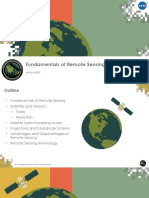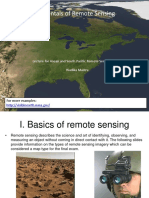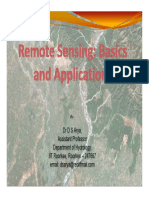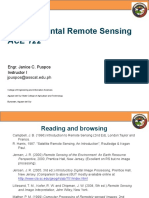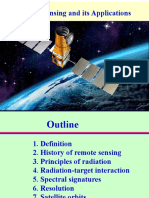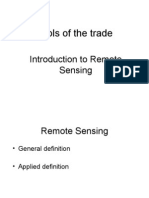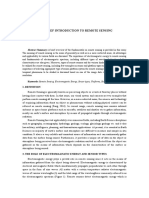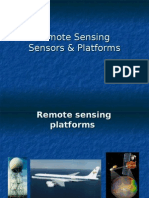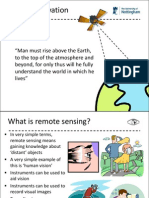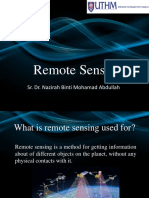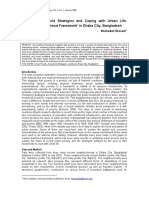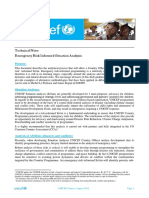0% found this document useful (0 votes)
90 views82 pagesIntroduction To Remote Sensing: Rezaul Roni
The document provides an introduction to remote sensing. It discusses that remote sensing is the science of acquiring information about Earth's surface from a distance, without physical contact. The history of remote sensing dates back to the early 1600s with inventions like the telescope and developments in aerial photography. Remote sensing works by sensing electromagnetic radiation from its source and detecting how it interacts with objects on Earth's surface. Sensors on different platforms are used to record this energy for analysis.
Uploaded by
Fakhrul IslamCopyright
© © All Rights Reserved
We take content rights seriously. If you suspect this is your content, claim it here.
Available Formats
Download as PDF, TXT or read online on Scribd
0% found this document useful (0 votes)
90 views82 pagesIntroduction To Remote Sensing: Rezaul Roni
The document provides an introduction to remote sensing. It discusses that remote sensing is the science of acquiring information about Earth's surface from a distance, without physical contact. The history of remote sensing dates back to the early 1600s with inventions like the telescope and developments in aerial photography. Remote sensing works by sensing electromagnetic radiation from its source and detecting how it interacts with objects on Earth's surface. Sensors on different platforms are used to record this energy for analysis.
Uploaded by
Fakhrul IslamCopyright
© © All Rights Reserved
We take content rights seriously. If you suspect this is your content, claim it here.
Available Formats
Download as PDF, TXT or read online on Scribd
/ 82
